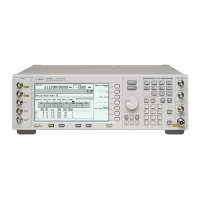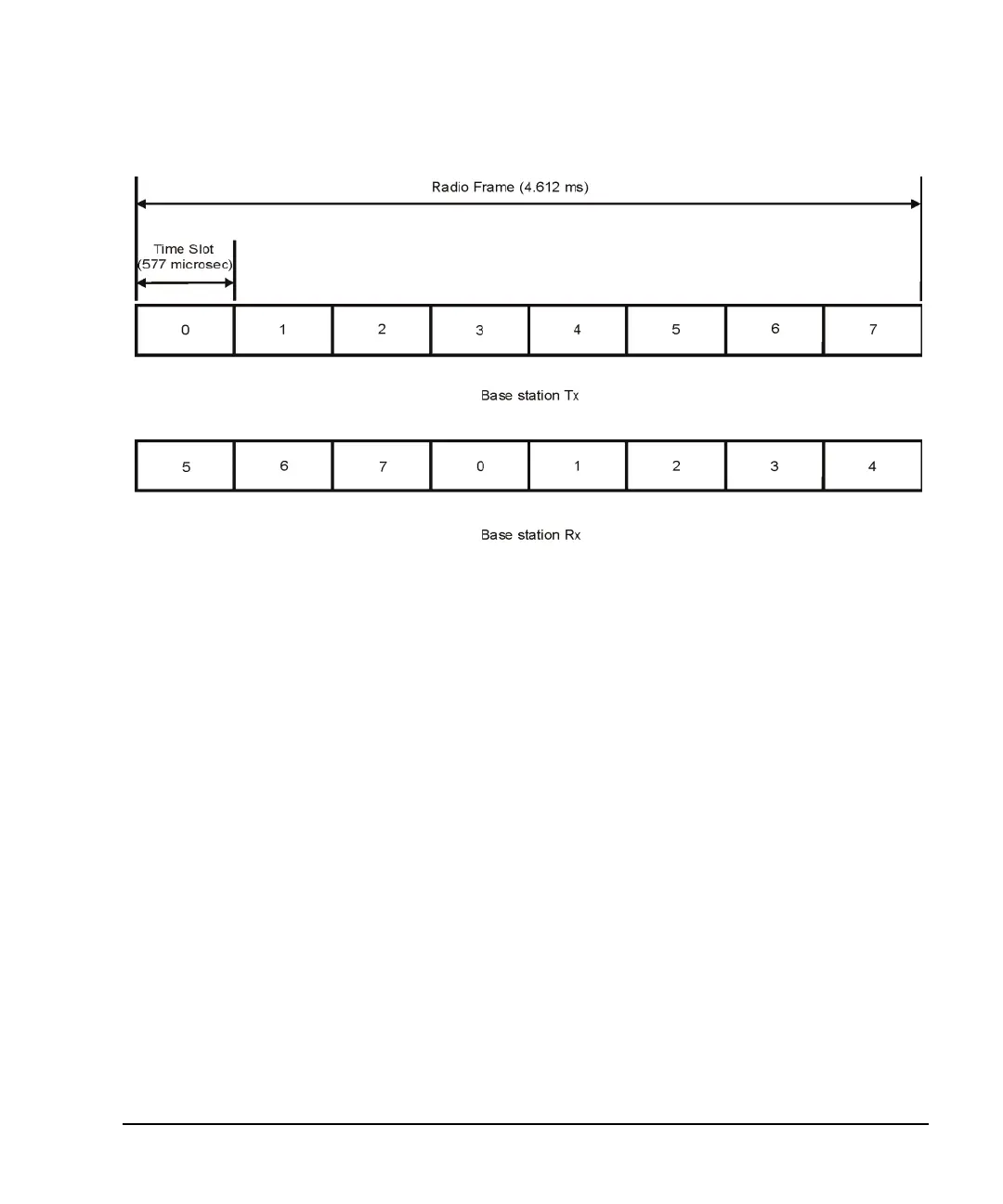Chapter 14 389
Real Time TDMA Formats
Enhanced Observed Time Difference (E-OTD)
Figure 14-1 1 TDMA Frame Structure
Each time slot when transmitted by the base transceiver station (BTS) or mobile phone station (MS) is a
radio burst. There are four types of GSM RF burst. Three of these burst types are in a category called full
duration and the fourth type is a short time duration burst. The three full duration bursts are: normal,
frequency correction, and synchronization. Both the base station and mobile station use the normal burst.
The remaining two sub-types, frequency correction and synchronization, are used only by the base station,
and only transmitted on the first time slot (labeled zero). The forth type is a short burst (88 bits) called the
random access burst (RACH) and only used by the mobile station to make connection with the base station.
The remaining time is padded with guard bits to keep the timing of a slot consistent.
The frame structure for the base station and mobile station are the same. However, the slot numbers are
intentionally offset by three time slots so the mobile station does not have to transmit and receive at the same
time. Refer to Figure 14-1 on page 389.
GSM Multiframe Structure
The TDMA frames are grouped into larger structures called multiframes. These multiframe structures are
necessary to allow the partitioning of physical channels into logical channels.

